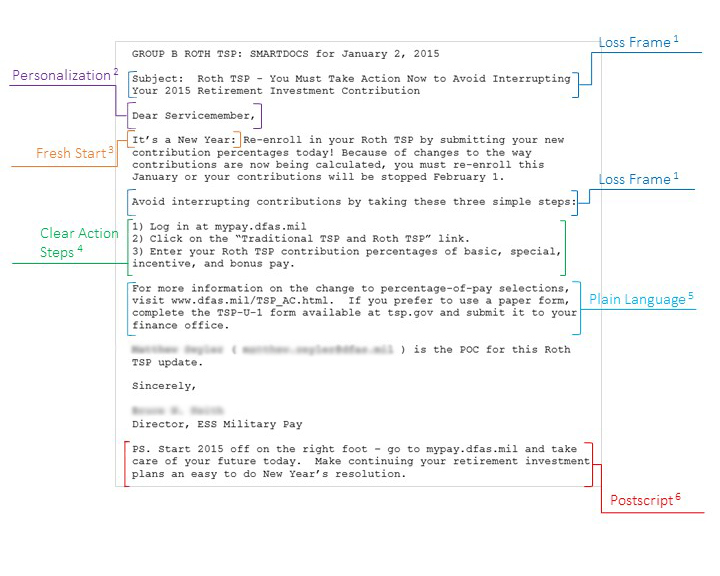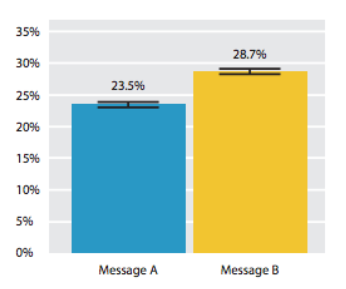At The Behavioural Architects we are often asked to redesign communications such as emails and letters to customers, using behavioural insights in order to improve response rates or action taken. We call this redesign process ‘BE scaffolding’. The first stage of the process is to ‘add the scaffolding’ - to annotate the original letter with ideas and suggestions for improvement based on behavioural science concepts. We then remove the ‘scaffolding’ to reveal a new BE inspired improved letter which the client can test against the original.
The US Social and Behavioral Sciences Team (SBST) use a similar approach for this process which we detail below. The SBST partnered with the US Department of Defense to help develop a better communications plan to ensure nearly 140,000 Servicemembers re-enrolled in their retirement savings plan (called Roth Thrift Savings Plan or TSP).*
The SBST redesigned the email asking Servicemembers to re-enrol using several different behavioural insights, such as:
- loss aversion (of losing out on making contributions),
- chunking the action steps and
- building cognitive ease through plain language.
See the image below with an example of their annotations on the revised email. Note that the superscript numbers refer to the relevant academic paper, making their insights very clearly evidence or theory based. For example, 1: Loss aversion, references the well known 1995 paper on Prospect Theory by Daniel Kahneman and Amos Tversky.

In January 2015, Servicemembers were either sent the original email (control group) or the redesigned email shown above. The redesigned email resulted in higher re-enrolment rates in the first week after emails were sent:
- 28.7% of Servicemembers re-enrolled after receiving the redesigned email.
- 23.5% of Servicemembers re-enrolled after receiving the original email.
This translates to a 22% increase in enrolments - for very little investment!

Percentage of Servicemembers re-enrolling in the Roth TSP within one week after sending the email. Message A is the control. Message B is the redesigned email using BE. Source: US SBST Annual Report, Sept 2015 p8
We use BE concepts not only to help you understand what might be reducing the impact of your communication, but also to inspire ways to leverage key cognitive biases that will subconsciously nudge people in the right direction. BE scaffolding provides a low cost, relatively short redesign process, for valuable impact.
Read more from The Behavioural Architects in our Clubhouse.
